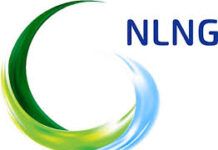It was a harvest of out – of – school – children in Katsina and five other states in the past 10 years when community enrolment drives by School Based Management Committees (SBMCs) and Mothers’ Associations ( MAs) with support from states and Local Government Education Authorities (LGEAs) enrolled about 1.3m girls in primary and Integrated Quranic Schools (IQS) exceeding the target of 1m in six states since 2012.
According to Champion Newspapers investigation, action to build girls friendly learning environment, create better retention and demand for new access through SBMCs, MAs and Girls for Girls (G4G) groups, using gender – sensitive whole school development involved no fewer than 18,567 schools that overachieved in the back – to – school campaign.
Speaking on some key results of the interventions implemented by UNICEF with funds donated Foreign Commonwealth Development Office ( FCDO) of the United Kingdom, the UNICEF Girls’ Education Project Phase 3 (GEP3) Manager in Kano Field Office, Mr. Michael Banda, said the development partners mapped out actions to improve attitude towards girls enrolment and completion, through community campaigns, peer support to girls and family negotiation by SBMCs, MAs and G4G groups.
Highlighting the enrolment drive, Banda explained that “cash transfer schemes were introduced to support families with the direct and opportunity costs of girls basic education.”
This, he said, is informed by the fact that economic factor significantly influences girls enrolment and retention.
According to UNICEF Impact of Cash Transfer Study, 2018: “In terms of the Cash Transfer Programme effectiveness, the proportion of households with two or more girl children enrolled in school was the highest among GEP3 – CTP benefiting households (25%) followed by GEP3 early learning only, benefiting households (21.7%) and 17.9% for the control. ” speaking further, Banda said “GEP3 – CTP group had the highest proportion of households with 1-2 girls (33.0%) and with 3 or more girls (5.2%) who had completed 9 years of schooling compared with the other two groups (GEP3 – Learning only and control). This underscored the effectiveness of the GEP3 early learning intervention especially when combined with CTP.” According to him, the impact of CTP on girl’s enrolment and household spending on girls’ schooling was strongly positive and statistically significant. “Cash transfers to the girl child through female care givers led to a significant increase in girls enrolment in schools between the baseline and end line,” he said. Specifically , it was further gathered that the back – to -school campaign was implemented in Nigeria and Zamfara States from 2015 to 2017 while the project (GEP3) interventions duration commenced in Sokoto, Katsina and Bauchi in 2012 while Kano State was added in 2018.
The Girls’ Education Project Phase 3 funded by the Foreign, Commonwealth and Development Office (FCDO) of the United Kingdom and implemented by UNICEF is among other things expected to focus specifically on encouraging girls to stay in schools.
The development partners during a recent Media Dialogue on Girls Education held in a Katsina reiterated that although girls face many barriers to acquire education they contended more with poverty , cultural norms and practices, poor infrastructure, violence and others.
Underscoring the importance of education and prioritising girls education, they pointed out that education, besides being the building block for all other sectors, the more of it a girl child receives the better her contributions to development of her society.
It will be recalled that the GEP3, funded with about 79 million pounds, an equivalent of 109 million dollars donation from FCDO, now in its three month extension period, has 15th September, 2022, as final deadline for its implementation.























